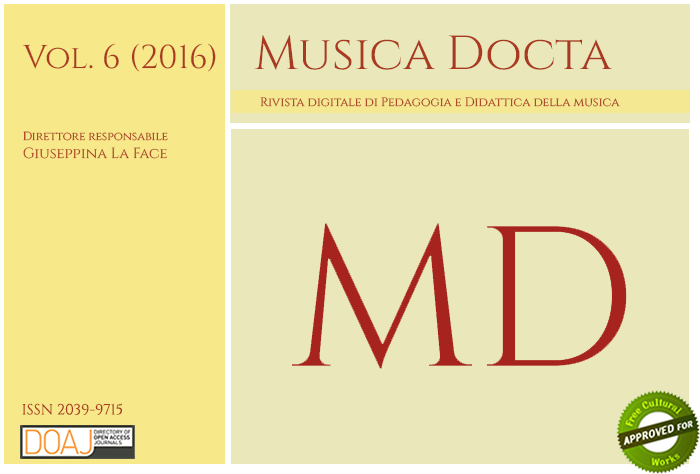Teaching Medieval Music Today: New Approaches to Paleography and Music History
DOI:
https://doi.org/10.6092/issn.2039-9715/6569Keywords:
Medieval music, Pedagogy, Guido of Arezzo, Music history teachingAbstract
Besides a tendency to abstractness, inherent in the technical nature of the subject itself, a common problem in the teaching of medieval music history is how to awaken the interest of learners in matters that are so far back in time as to have nothing in common with modern sensibility. Referring to the introduction of the staff by Guido of Arezzo in the 11th century, the article tries to explain how, by aptly combining chronologically organized descriptions of facts with a basic study of documents (that is, by adopting the rudiments of the research methods used by expert historians), students can be encouraged to reconstruct history with a strict method. This approach also sheds light on the reasons why men and women of the past adopted certain innovations or kept certain traditions alive.
Downloads
Published
How to Cite
Issue
Section
License
Copyright (c) 2016 Cesarino Ruini
The copyrights of all the texts on this journal belong to the respective authors without restrictions.
This journal is licensed under a Creative Commons Attribution Share-Alike 4.0 International License (full legal code).
See also our Open Access Policy.
Metadata
All the metadata of the published material is released in the public domain and may be used by anyone free of charge. This includes references.
Metadata — including references — may be re-used in any medium without prior permission for both not-for-profit and for-profit purposes. We kindly ask users to provide a link to the original metadata record.






